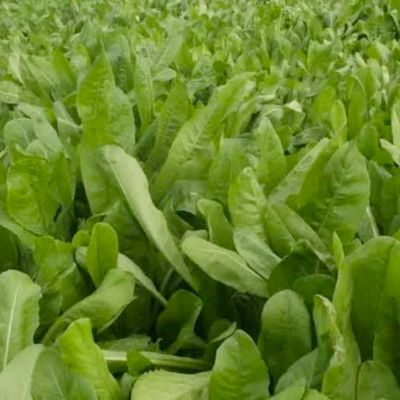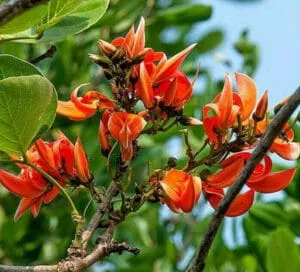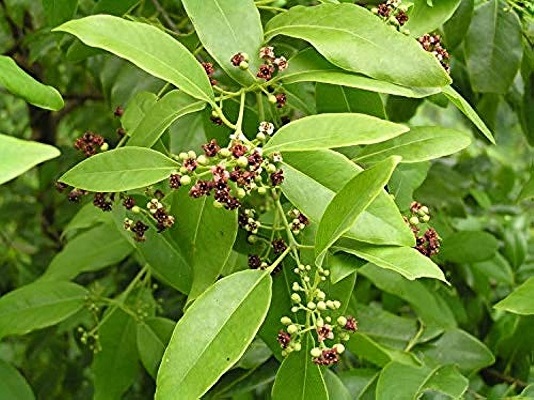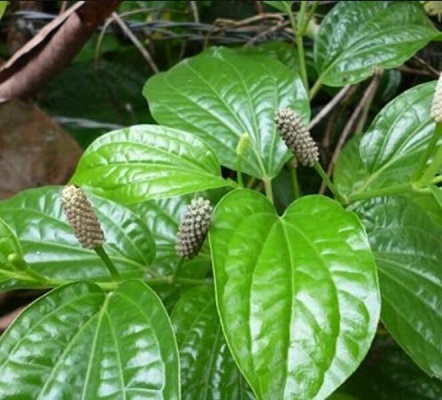On This Page
Palasa – Butea monosperma
Introduction
Palasa, commonly known as Bastard teak or Bengal kino is one of the commonly used herb as antiallergic and anthelmintic agents. The name Palasa indicates the characteristics of its leaves. It is also known as Krimighna, because it is very useful in worm infestations. It is the most commonly used anthelmintic drug in Ayurveda and also used to perform religious rituals. It is also used in allergic conditions over skin.
Dr.Gupta’s IAFA have been studying on readily available herbs for the purpose of alleviating allergic condition. Our experts studied on Palasa and proven the plant’s therapeutic activities like Anthelmintic, Antiallergic, Laxative, Tonic, Aphrodisiac, Diuretic actions etc. Palasa can be used in various diseases like colic, fever, burning sensation, skin diseases etc. Ethanolic bark extract of Palasa shows anti obese activity and its hydroethanolic extract shows antihyperglycemic, antihyperlipidemic and antioxidative properties. The phytoconstituent buteaspermin aid to its hepatoprotective activity. And Palasa can also be used in different skin allergic conditions.
Action of Palasa – Butea monosperma in Allergies
IAFA experts have successfully proven the antiallergic property of Palasa. The plant contains phytoconstituents like buteaspermin, palasonin, aleuritic acid, butrin, isobutrin, coreospin, isocoreospin, sulphurein, monospermoside, isomonospermoside, tannic acid, gallic acid etc. These phytoconstituents aids the antiallergic and anthelmintic property of Palasa. Thus it can be effectively used to cure allergic conditions.
Vernacular Names
| Sanskrit Name | Palasa, Tripatra, Kharapatra |
| Hindi Name | Palas |
| English Name | Bastard teak, Bengal kino |
| Malayalam Name | Murukka maram, Plasu |
| Kannada Name | Muttuga |
| Marathi Name | Palash |
Botanical Name
Butea monosperma
Family
Papilionaceae
Morphology of Palasa – Butea monosperma
- An erect tree
- Branches are irregular and ash coloured
- Leaves are compound and trifoliate
- Inflorescence is raceme
- Flowers are orange or salmon coloured
- Fruits are pods
Ayurveda reference of Palasa – Butea monosperma

Geographical distribution of Palasa – Butea monosperma
Palasa grows throughout India. It is also cultivated as its leaves are commonly used.
Phytoconstituents of Palasa – Butea monosperma
The plant contains phytoconstituents like buteaspermin, palasonin, aleuritic acid, butrin, isobutrin, coreospin, isocoreospin, sulphurein, monospermoside, isomonospermoside, tannic acid, gallic acid etc.
Parts used of Palasa – Butea monosperma
- Seeds
Dosage of Palasa – Butea monosperma
- Seed Powder(beeja churna)- 1-8 g
- Decoction(kwatha) – 50-100 ml
- Leaf juice(patra swarasa) – 10-20 ml
Medicinal Properties of Palasa – Butea monosperma
- Jwaraghna – relieves fever
- Sulahara-relieves pain
- Trishnahara – relieves excessive thirst
- Dipana – carminative
- Arsoghna – cures piles
- Kushtaghna – useful in skin diseases
- Daha nasaka- useful in burning sensation
- Krimighna- useful in worm infestations

Have A Health Issue?
Consult Online
- Dr. Sahil Gupta (B.A.M.S., M.H.A.)
Ayurvedic Allergy Specialist
CEO & Founder of IAFA®
Home remedies of Palasa – Butea monosperma
Ayurveda being an ancient system of medicine and lifestyle modification it widely practiced in India. It uses the commonly seen herbs as medicine. Palasa is one of the widely used herb in Ayurveda and is used in many diseases like,
- In Fever (Jwara) – Palasa is taken, crushed and made into a decoction. It is taken to cure fever.
- In Burning sensation (Daha) – Paste is prepared from tender leaves of Palasa and Azadirachta indica with sour gruel and applied over skin.
- In Colic (Paittika sula) – Soup prepared from Palasa and Coriandrum sativum is taken with sugar.
- In Skin diseases (Kushta) – Paste of seeds of Palasa is applied over skin.
- In Piles (Arsas) – Decoction is made from.Palasa and is taken to cure piles.
- As Carminative (Dipana) – Powdered Palasa seeds is taken with honey before food.
- In Worm infestation (Krimiroga) – Paste or juice of Palasa seed is taken with rice water or butter milk.
- In Excessive thirst (Trishna) – Water processed with Palasa is taken repeatedly.
Ayurveda is an Indian system of medicine which uses commonly seen herbs as medicine. Dr.Gupta’s IAFA is a leading researcher in Ayurveda and have been conducting research studies to find out different phytoconstituents of herbs and their action in body. By utilising these informations IAFA provides of safe and effective treatment for a wide range of diseases, mainly allergic diseases all based on Ayurveda.
Reach IAFA for safe herbal remedies for all your ailments!!!
Was this Page Helpful?
Read More Articles
-

Kasini (Cichorium intybus)
Kasini (Cichorium intybus) commonly known as Chicory is a perennial herb, with large…
-
-









